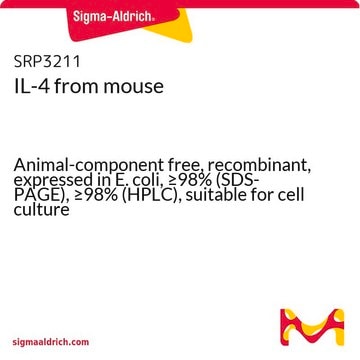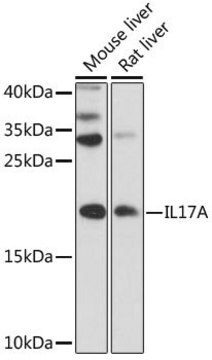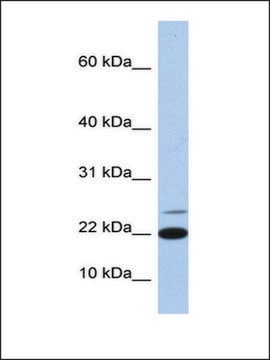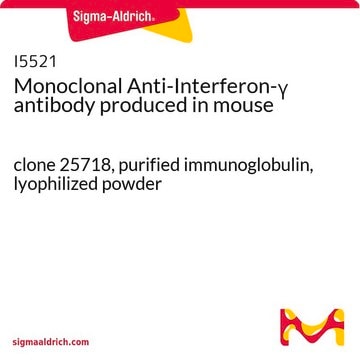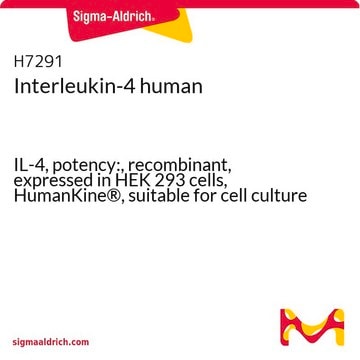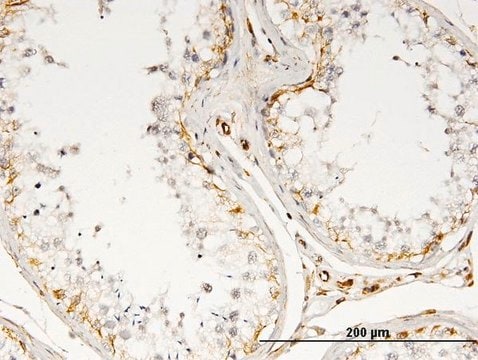I7034
Monoclonal Anti-Interleukin-4 antibody produced in mouse
clone 3007, purified immunoglobulin, lyophilized powder
Sinónimos:
Anti-IL-4
About This Item
Productos recomendados
origen biológico
mouse
Nivel de calidad
conjugado
unconjugated
forma del anticuerpo
purified immunoglobulin
tipo de anticuerpo
primary antibodies
clon
3007, monoclonal
formulario
lyophilized powder
reactividad de especies
human
técnicas
immunohistochemistry: 5-15.0 μg/mL
neutralization: suitable
western blot: 1-2 μg/mL
isotipo
IgG1
Nº de acceso UniProt
temp. de almacenamiento
−20°C
Información sobre el gen
human ... IL4(3565)
¿Está buscando productos similares? Visita Guía de comparación de productos
Descripción general
Anti-Interleukin-4 specifically recognizes human interleukin-4 (12-20 kDa). It does not react with mouse IL-4.
Inmunógeno
Aplicación
Forma física
Cláusula de descargo de responsabilidad
Not finding the right product?
Try our Herramienta de selección de productos.
Producto relacionado
Código de clase de almacenamiento
13 - Non Combustible Solids
Clase de riesgo para el agua (WGK)
WGK 1
Punto de inflamabilidad (°F)
Not applicable
Punto de inflamabilidad (°C)
Not applicable
Equipo de protección personal
Eyeshields, Gloves, type N95 (US)
Certificados de análisis (COA)
Busque Certificados de análisis (COA) introduciendo el número de lote del producto. Los números de lote se encuentran en la etiqueta del producto después de las palabras «Lot» o «Batch»
¿Ya tiene este producto?
Encuentre la documentación para los productos que ha comprado recientemente en la Biblioteca de documentos.
Nuestro equipo de científicos tiene experiencia en todas las áreas de investigación: Ciencias de la vida, Ciencia de los materiales, Síntesis química, Cromatografía, Analítica y muchas otras.
Póngase en contacto con el Servicio técnico